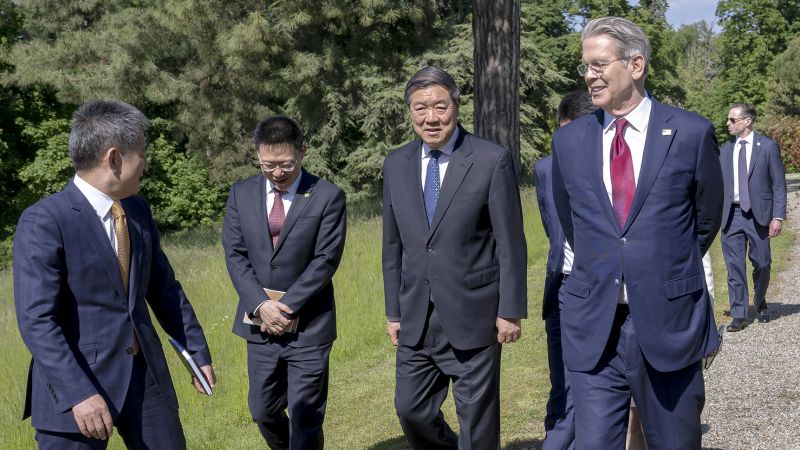In recent developments, just a few days after the United States and China announced a temporary ceasefire regarding tariffs, tensions have quickly resurfaced, particularly concerning the future of China’s advanced homegrown semiconductors. The ongoing dispute centers on the technology sector, where companies like Huawei are becoming key players in the global market.
The situation escalated over the past week as Beijing vehemently criticized Washington for its warnings directed at companies about utilizing AI chips produced by Huawei, a national tech champion. The Chinese government has accused the Trump administration of undermining the agreements reached during recent trade discussions in Geneva. These discussions had seen an agreement to temporarily roll back tariffs and a declared 90-day period for both nations to negotiate a more comprehensive and stable trade arrangement. However, these cooperative terms seem to be unraveling as both sides increasingly resort to accusatory rhetoric amidst the current geopolitical landscape.
This incident with Huawei’s AI chips highlights a stark reality: irrespective of the diplomatic niceties exchanged by negotiators from the US and China, significant divergences remain on numerous issues, including those related to technology and trade. The conflict over these advanced chips is not merely limited to corporate interests; it reflects broader strategic concerns regarding national security and technological supremacy. The Chinese Commerce Ministry further intensified the dialogue by accusing the US of leveraging export controls to effectually suppress and contain China, labeling such actions as unilateral bullying and protectionist tactics.
The backdrop to this confrontation can be traced to the Trump administration’s recent announcement that rescinded a series of Biden-era restrictions that were intended to keep AI chips away from foreign adversaries. This rollback has raised eyebrows and led to mounting frustrations from China. Following the announcement, the US Commerce Department issued a warning on May 12, asserting that utilizing Huawei Ascend chips globally would breach US export regulations. Nonetheless, in a subsequent revision, the phrasing from the department was adjusted to remove the global restriction, an indication of the possibly shifting tactical approach from the US.
At the heart of the matter lies Huawei’s Ascend chips, renowned as the company’s most potent AI processors. These chips are pivotal for training AI models and are designed to compete directly with Nvidia, a dominant player in the high-end chip market. The efforts made by Huawei are at the forefront of Chinese President Xi Jinping’s ambitions to enhance China’s capabilities in developing leading-edge semiconductor technology. As the race for AI supremacy intensifies globally, these chips are integral to the nation’s strategy to establish technological independence and challenge the existing hierarchy led by the US.
Amidst this turbulent situation, CNN has sought responses from Huawei, attempting to gauge the company’s stance on the ongoing battleground of international technology and trade. The developing story continues to evolve, with potential repercussions not only for the technology sector but also for US-China relations as a whole. Trade negotiators from both sides are now faced with the challenge of bridging these evident rifts, particularly in light of the critical nature that semiconductor technology holds for future economic sovereignty and innovation.
As policymakers navigate this complex landscape, the path forward remains fraught with difficulties. The interplay between tariffs and technology will likely define the next phase of US-China relations, making it imperative for both nations to find common ground amidst their divergent strategic objectives. Future updates on this matter will provide further insight into the developments and reactions from both governments, as well as the broader implications for international trade and technology dynamics.



